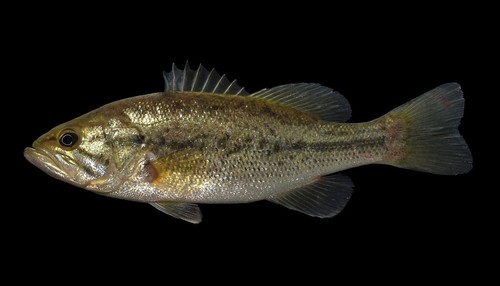
Black Bass
The Atlantic Bluefin Tuna (Thunnus thynnus) is a highly migratory, large pelagic fish known for its incredible speed, size, and commercial value. As one of the largest bony fish, it plays a crucial role in the marine ecosystem and is a prized catch in fisheries worldwide.
5 15 years
Lifespan
40 - 60 cm
Length
Least Concern
Conservation Status
20 km/h
Swimming speed
Carnivorous, Insectivorous
Diet
Local Migration
Migration
Appearance Overview
The Atlantic Bluefin Tuna is renowned for its large, streamlined body, built for speed and endurance.
Color
Dark metallic blue on top with a silvery underside
Body
Torpedo-shaped
Fins
Two dorsal fins, the first retractable; small, yellow finlets running from the second dorsal and anal fins to the tail
Length
Up to 10 feet (3 meters), commonly 6.5 feet (2 meters)
Weight
Up to 1,500 lbs (680 kg), commonly around 550 lbs (250 kg)
Diet
Carnivorous, feeding on a variety of fish, squid, eels, and crustaceans.
Feeding Behavior
Highly active predator that uses its speed to chase down prey, sometimes hunting cooperatively in schools to herd and capture smaller fish.
Social Behavior
Forms schools, sometimes segregated by size; highly migratory, capable of crossing entire oceans.
Commercial Relevance
Extremely high value, especially in sushi and sashimi markets, where its fatty flesh is considered a delicacy. This demand has driven prices to exceptionally high levels.
Conservation measures
Subject to international fishing quotas, monitoring programs, and efforts to reduce illegal fishing. Marine protected areas also play a role in conservation efforts.
Status
Endangered
Threats
Overfishing remains the primary threat. Additionally, bycatch in fishing gear, climate change affecting prey distribution, and habitat degradation pose risks.
Habitat Distribution
Depth Range
0-900 meters, though they are often found in surface waters.
Geographic Range
Atlantic Ocean, Mediterranean Sea, and the Gulf of Mexico
Preferred Environment
Temperate and subtropical waters; pelagic, open ocean environments.
Reproduction and Life Cycle
Breeding Habits
Spawns in warm waters, with major spawning grounds in the Mediterranean Sea and the Gulf of Mexico. Spawning typically occurs from May to July.
Development Stages
Larvae hatch in the open ocean and develop rapidly, feeding on plankton. Juveniles grow quickly, transitioning to a diet of small fish.
Fecundity
Females can produce up to 30 million eggs per spawning season, releasing them in batches.
Maturity Age
Matures at around 4-8 years, although this can vary by location and population.
Faqs about Black Bass
Where can Atlantic Bluefin Tuna be found?
Atlantic Bluefin Tuna are found in the Atlantic Ocean, ranging from the Mediterranean Sea to the Gulf of Mexico and from Newfoundland to Brazil.
How long do Atlantic Bluefin Tuna live?
They can live up to 40 years.
Are Atlantic Bluefin Tuna migratory?
Yes, they are highly migratory and can cross the Atlantic Ocean multiple times during their lives.
What do Atlantic Bluefin Tuna eat?
They are carnivores, feeding on fish, squid, and crustaceans.
What is the biggest threat to Atlantic Bluefin Tuna?
The main threat is overfishing due to their high commercial value.
Copyright @ Nature Style Limited. All Rights Reserved.
 English
English